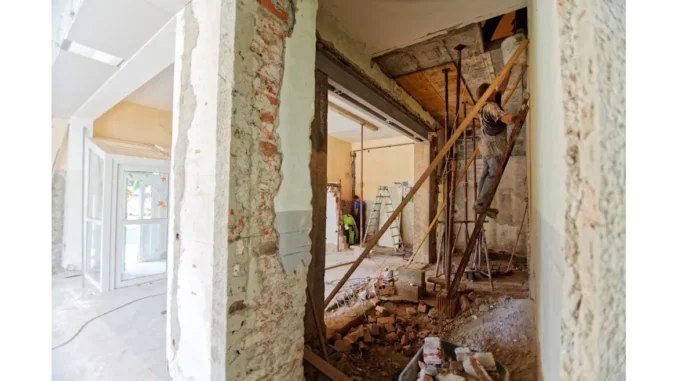
In the heart of suburban London, nestled among rows of Victorian homes, resides Emily Carter, a primary school teacher with a knack for home improvement projects. Emily recently embarked on a journey to enhance her living space, installing a new central air-conditioning system and replacing her ageing roof. While the process was rewarding, it also opened her eyes to the often-overlooked connection between home improvements and taxes. I had the opportunity to sit down with Emily to discuss her experience and the lessons she learned along the way.
Invest in your homeElegancia.homes orangeries increase value and appeal over other properties.
Emily’s journey began last summer when the sweltering heat prompted her to consider installing central air-conditioning. “I thought it was a straightforward decision,” she recalls. “Comfort was my main priority, and I didn’t think much about the financial implications at the time.”
The installation of a central air-conditioning system is a significant investment. However, it qualifies as a capital improvement, which means it adds value to the home, prolongs its life, or adapts it to new uses. Emily was pleased to learn that such an investment could be added to her home’s cost basis. “I didn’t even know what a cost basis was until I spoke to my accountant,” she laughs. “It turns out, it’s quite important.”
Emily’s accountant explained that the cost basis is crucial when it comes time to sell her home. The cost of capital improvements, like her new air-conditioning system and roof, would be added to her original purchase price. This adjusted cost basis would then be subtracted from the sales price to determine her profit. “It’s quite a relief to know that the money I spent will help me in the future,” Emily notes.
However, Emily was surprised to learn that she couldn’t deduct the cost of these improvements in the year she spent the money. “I was under the impression that any home improvement could be deducted immediately,” she admits. “But that’s not the case.”
This distinction between improvements and repairs can be a bit murky. While capital improvements enhance the home’s value, repairs simply maintain it. Emily’s accountant clarified that expenses such as fixing a gutter or painting a room fall under repairs and cannot be added to the cost basis or deducted from the sales price. “Understanding the difference was a game-changer for me,” Emily says.
Another interesting aspect of Emily’s home improvement journey was the potential for energy-saving tax credits. “I was thrilled to learn that some upgrades could qualify for credits,” she says. Although her central air-conditioning system didn’t qualify, she is considering other energy-saving improvements like solar panels in the future.
Emily’s experience highlights the importance of keeping meticulous records. “I started a folder for all my receipts and documents related to home improvements,” she explains. “It’s not just about saving money now, but also about being prepared for when I eventually sell my house.”
For many homeowners, especially those who’ve lived in their homes for several years, this preparation is crucial. As housing prices climb, so does the potential for a taxable gain when selling a home. Emily’s newfound understanding of cost basis adjustments serves as a shield against unexpected tax implications down the road.
The conversation with Emily also touched on a lesser-known aspect of home ownership—running a business or renting a portion of the home. “I don’t have a business, but my neighbour does,” Emily shares. “It’s fascinating how the tax rules differ for them.” Homeowners in such situations might be able to deduct part of their home’s adjusted cost basis through annual depreciation. However, this also means they might have to recapture depreciation as a taxable gain upon selling the house.
Emily’s story is a testament to the complexity of home improvement and its interplay with taxes. Her journey underscores the necessity of consulting with a tax professional to navigate this intricate terrain. “I thought I could handle everything myself, but I’m glad I sought professional advice,” she reflects.
In conclusion, Emily’s experience serves as a valuable lesson for homeowners considering major improvements. While the initial outlay might not yield immediate tax benefits, understanding the long-term implications can provide significant financial advantages. As Emily puts it, “Investing in your home is more than just making it look nice; it’s about making informed decisions that will benefit you in the future.”
For homeowners like Emily, a blend of careful planning, record-keeping, and professional advice ensures that the journey of home improvement is not just about enhancing living spaces, but also about securing financial peace of mind.
Sarah Dale


Be the first to comment